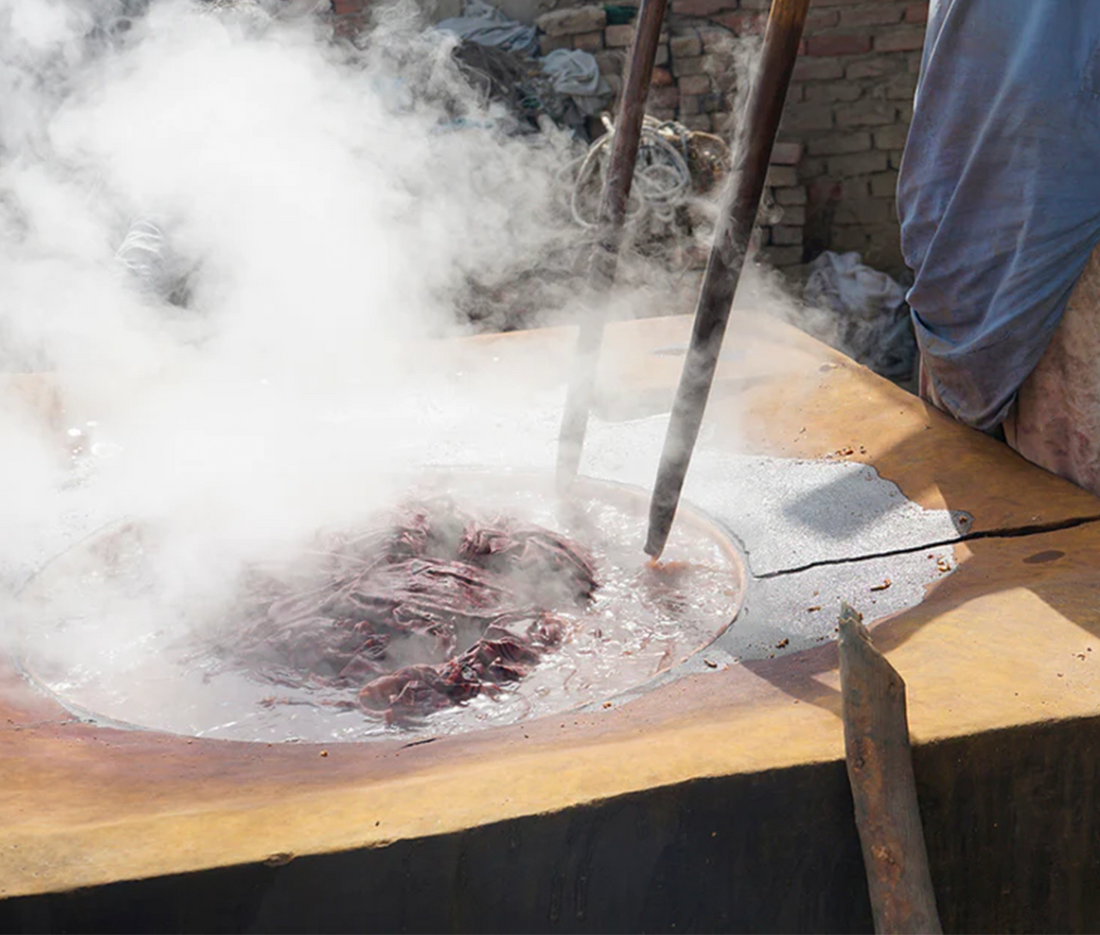
What are you wearing?
No, really, all jokes aside: what have you got on? Can you take a look at the label and see where the garment on your body was made?
Here's the thing: that "Made in X Country," line is not fully accurate. The place where the final assembly of a garment takes place is not the same as where the textile comes from, where the buttons, zipper, etc., come from. There is so much that goes into making one final piece of garment.
And we want to take you behind the scenes and introduce you to one small but significant element of our process: a collection of natural dyes used for printing our textiles. Come, take a walk with us through this gallery as we tell you a bit about this history and uses of indigo, marigold, and pomegranate!

 Indigofera
Indigofera


From deep jewel tone blues, to vibrant golden yellows, we now arrive at the marigold flower and it’s uses in textile printing.

Yellow is one of the most common natural dye colors, and isn’t it just so uplifting in each of its varieties? It’s as if each petal collected and stored a bit of sunshine.
Marigold is an easy to grow flower that produces bright color dyes on fabric, pretty quickly. The only catch is that marigold really only works well and lasts long on 100% natural fabrics, threads, and wools.
The textile workshops we work with add aluminum or iron as an element that helps the dye bind strongly with the dye, for longer-lasting colors and vibrancy on the garments.
And last but not least, we have arrived at Queen Pomegranate.

The ancient, romantical, pomegranate. One of the oldest growing fruits known to humanity, pomegranate has been a symbol of life, fertility, and beauty throughout the ages. Pomegranate motifs are memorialized and used over and over again in art and fashion.




An example of a woodblock printed textile from the workshop in Pakistan created using Marigold and Pomegranate for dyeing
The next time you put on your favorite garment, take a look at the details and imagine the work that went into designing and creating that piece.
Are you going to hop into your kitchen or garden and experiment with some natural dyes on your own? Let us know how it goes in the comments below!



2 comments
Nice blog post about for dyes pigments.
Lovely post, Tehmina! These are very important questions and aspects of the supply chain you bring up. I look forward to reading and learning more from you.